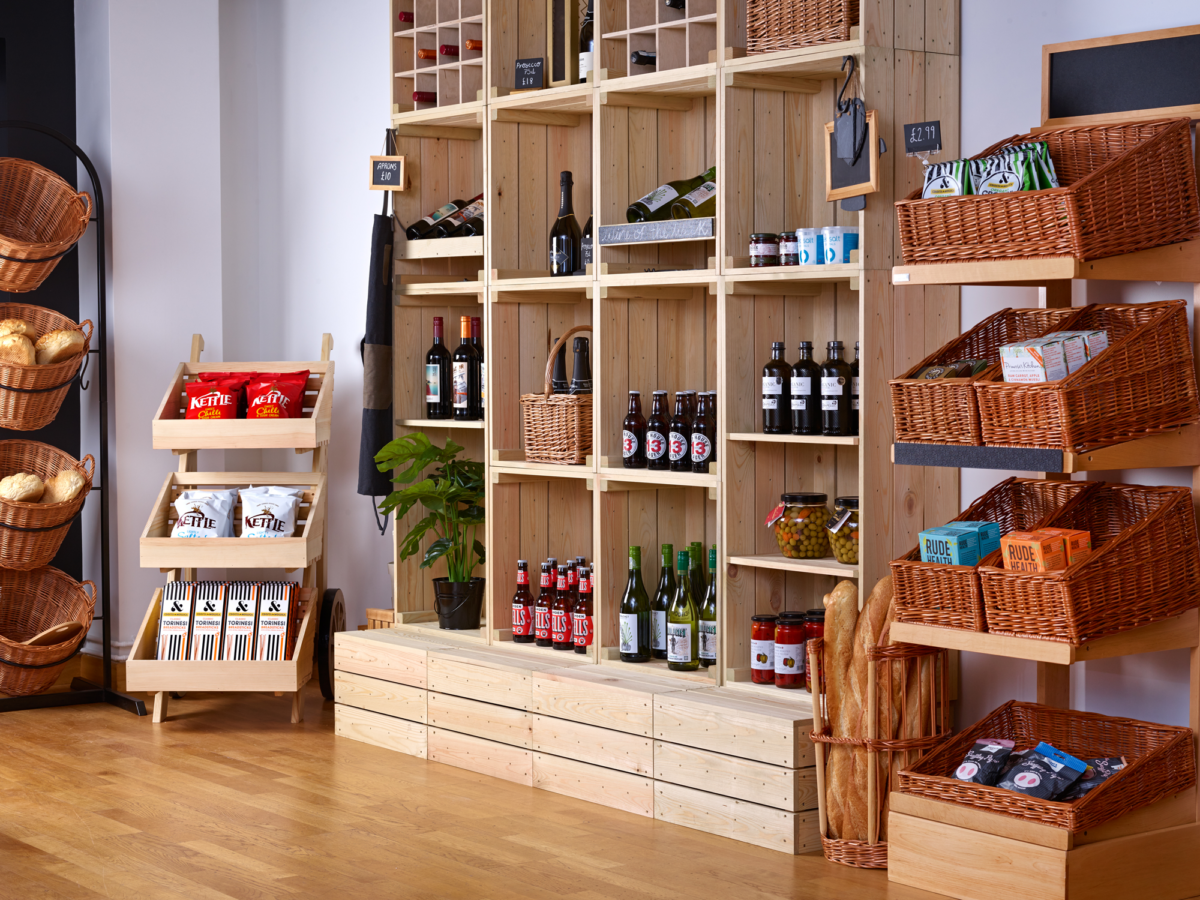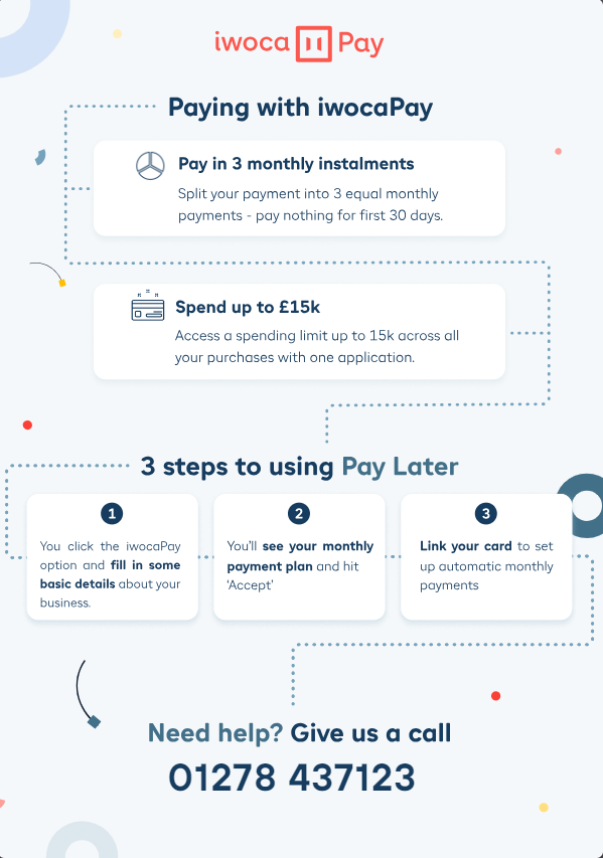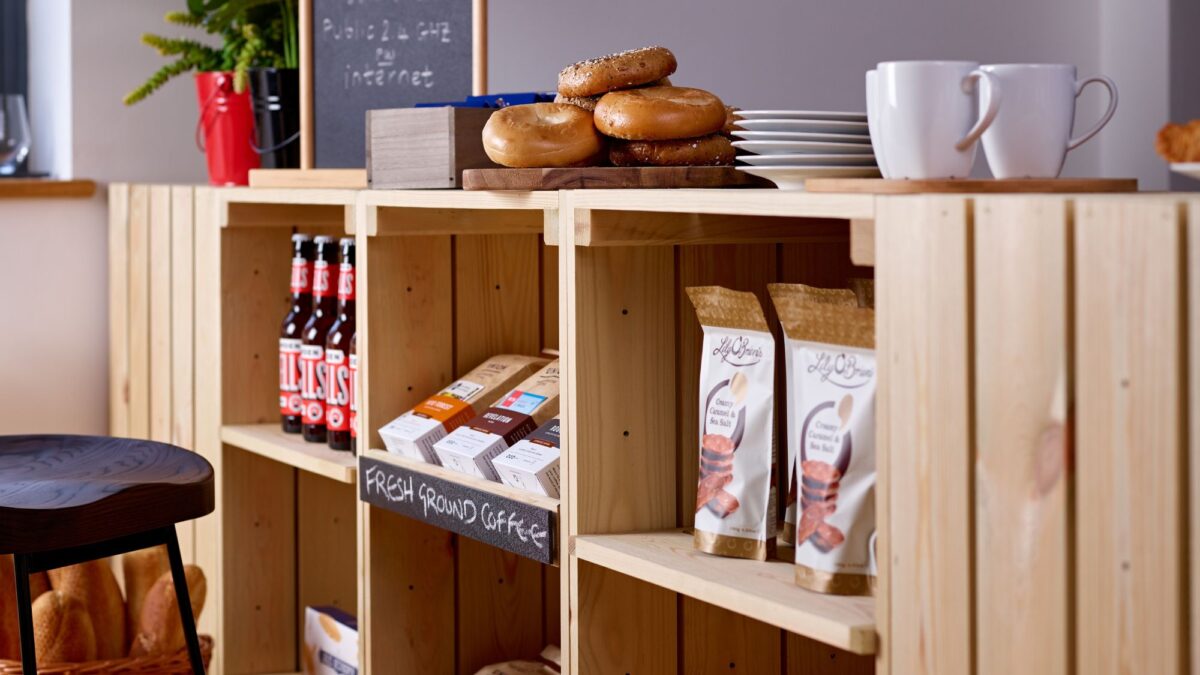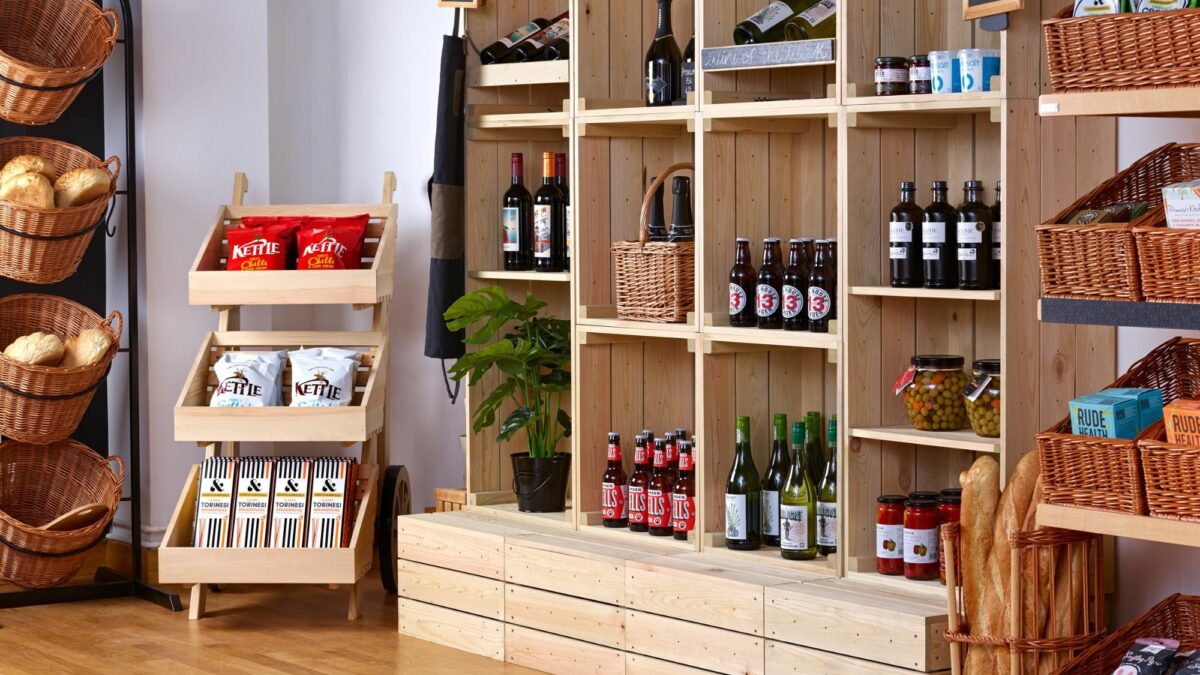Boost Your Fashion & Home Sales With These Top Tips
Whilst getting shoppers to step into your store is crucial, how you engage them once they're inside is even more important. It's rarely the case that your products will sell themselves. Rather than leaving your fashion sales to chance, optimise your retail displays to help you sell more and build customer loyalty.
In this next article we take a look at some new and additional display tactics that can increase sales for your fashion brand, from making the most of your retail space to cross-merchandising.
Discover the benefits of wooden crates
Often the first things that come to a fashion retailer's mind when planning their retail space are clothing rails, table tops, retail stands and aisle racking. However, merchandising space goes beyond the floor. By overlooking your wall area you could be missing out on prime sales space.
If you have an area of blank wall towards the back of your store you can use this to encourage customers to pass from the front to the rear by installing a large display feature to showcase your bestsellers. For instance, you could build a modular CrateWall display that scales an entire wall and will be visible from the entrance from your store. You need to focus on customer eyelines and get them enticed to look further inside.
What's so great about the CrateWall is that it's not limited to large retail environments. Smaller retailers can also use the wooden crates to create unique display units that make effective use of empty wall space - there are countless display combinations!
Vertical merchandising is the tactic of displaying retail items above and below each other to increase cross-sales. For example, if you stacked four 50cm wooden crates, instead of putting jeans in all four crates top to bottom you'd display t-shirts in the top crate, jumpers in the second, jeans in the third and footwear in the bottom crate. This way shoppers are inspired and compelled to buy a whole outfit when they only came in for a pair of jeans!

Utilise wall space
Clothing rails are one of the most popular types of clothing displays, yet not all clothing racks are the same - some include shelves with them, some have multiple levels to hang items on, and some are ideal for highlighting bestselling garments and popular brands. There are many ways to organise a clothing rack to capture a shopper's attention and generate sales. Here are some things you should consider when choosing the right type of clothing rail for your store.
Single wall mounted clothing rails and T shaped clothing rails are great for highlighting new arrivals and featured products as they provide good visibility of the outfit or specific garments you want to promote. Mounting these on a wall near to a flat top display cart, CrateWall counter or additional shelving can allow the customer to easily locate and pick the right size and colour of the promoted item they want.
Think about ways you can group apparel to give customers an idea of the outfit they can put together from your collection. For instance, if you're after a display system where you can merchandise tailored suits together with matching formal footwear, then you should consider a wooden shelf with a clothing rail. Alternatively, you could display tees on the top self and jumpers on the lower shelf of a double industrial shelving unit. What's fantastic about the endlessly adaptable Industrial Wall System is that you can create just about anything to fulfil your display requirements!
Customers walking into a store are rarely impressed with messy shelves, disorganised rails and bland rows of piled up merchandise. Wall mounted shelves and hanging rails work well in most retail environments especially those where floor space is at a premium, however they are only effective if the rails and clothing displayed are within easy reach of shoppers.
Use powerful presentation
Using natural materials such as wicker, wood and metal in your retail displays will complement your products without them having to compete for attention, letting your merchandise stand out. Having more eco-friendly displays also has additional benefits. The combined use of textured wicker, real wood and metal creates associations of value and reinforces a brand that appeals to today's more eco-conscious customers - there's actually statistical evidence that a more natural retail decor makes customers feel comfortable and relaxed.
Clothing accessories are great impulse products for customers to grab whilst shopping for an outfit or queuing at the till or changing rooms. To encourage sales of smaller clothing items and accessories try presenting them in creative display accessories such as wicker baskets, wooden crates, metal baskets or buckets.
With a mix of display shelving and floor display units you can put a lot more clothing on the retail shop floor to maximise your store's footprint. Be wary not to overdo it though, as too much clutter can be overwhelming and make it difficult to see what's for sale. A standard tip is to give higher priced, premium brands more retail space, whereas it's ok to pile lower prices basics tees and essentials on display stands and shelves.
Support with signage
In retail you can use signage to fulfil various objectives. It can inform customers of prices and product details, or help navigate shoppers to different sections of your store. Where do you want them to head? What do you want them to see? If you've just launched a new clothing brand or seasonal sale, steer them that way.
Positioning signs in carefully chosen locations throughout your store will get great results. From highlighting matching garments to limited edition collections, there are many ways that effective in-store signage can drive product engagement and connect with a shopper. A great example of how signage can improve customer engagement is by using it to build customer confidence - giving styling tips or suggestions like a personal shopper would.
A pitfall of printed graphic signs is that they cannot be adapted easily, if at all, limiting your ability to be reactive to retail sales and trends. Where printed graphics aren't necessary or practical, alternative point of sale options and chalkboards provide a flexible and easily adaptable solution.
Point of sale and signage is meant to capture shopper's attention to products in your store, however you want it to be eye-catching for the right reason. There are a number of different styles of signage used in retail stores, all with the same objectives to drive traffic, to get customers into your store, to effectively communicate with customers and grow sales, yet some are more effective than others. The appearance of your signs matter just as much as other visual elements in your store so chose wisely and go for signage in keeping with the rest of your decor to make the maximum impact.
Explore what motivates customer behaviour. Read our next article - An Introduction Into Consumer Psychology or browse the other guides in our Retail Display E-Learning Hub.








